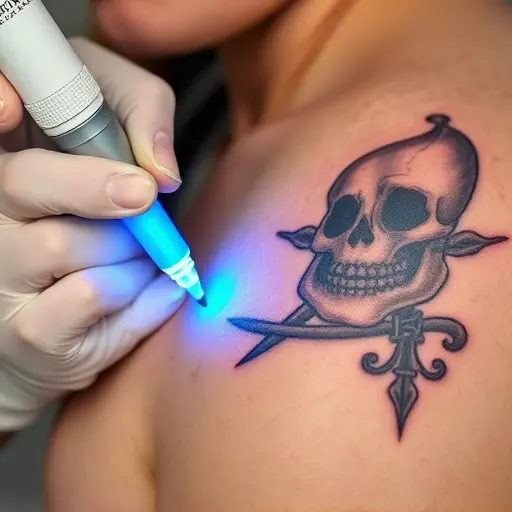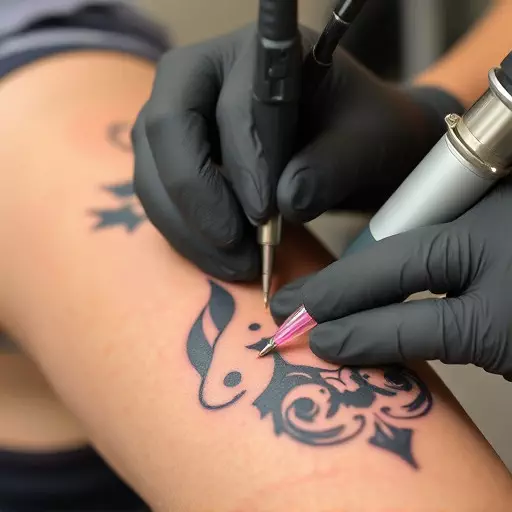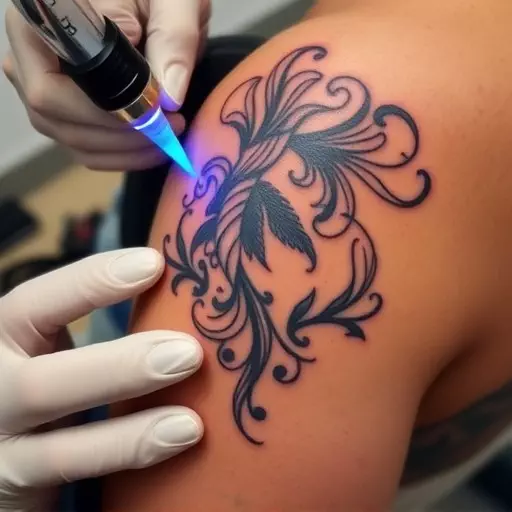Toledo offers advanced tattoo removal with various techniques suitable for different needs. Laser tattoo removal is precise and efficient, fragmenting ink particles for immune system absorption, but may not suit all skin types or designs. Non-laser methods like surgical excision, dermabrasion, and topical creams provide alternatives, each with unique recovery times, scarring potential, and precision. Residents can choose the best option based on their specific tattoo size, color, depth, and personal preference.
Tattoo removal has evolved into a refined process, offering various techniques to suit individual needs. Understanding these methods is essential for those seeking to eliminate unwanted ink. This article explores different tattoo removal techniques, with a focus on the effectiveness of laser and non-laser methods in Toledo. We delve into managing pain during these processes, providing insights for anyone considering tattoo removal. Discover how these advancements can ensure a smoother journey towards ink-free skin.
- Understanding Tattoo Removal: Techniques and Their Effectiveness
- Laser vs Non-Laser Methods: A Detailed Comparison
- Managing Pain During Tattoo Removal Processes
Understanding Tattoo Removal: Techniques and Their Effectiveness

Tattoo removal has evolved significantly over the years, offering a range of techniques to suit different needs and preferences. The primary goal is to break down and eliminate the pigmented ink deposited under the skin during tattooing. One of the most popular and widely used methods is laser tattoo removal, which employs high-energy light beams to target and fragment the ink particles, allowing the body’s immune system to gradually absorb and clear them.
While laser tattoo removal remains the gold standard due to its precision and effectiveness, there are also non-laser tattoo removal methods available. These alternatives include surgical excision, where a doctor cuts out the tattooed skin and stitches it back together, and topical creams or ointments that dissolve the ink over time. Each technique has its advantages and is chosen based on factors like tattoo size, color, depth, and patient preference, ensuring the best possible outcome for tattoo removal in Toledo.
Laser vs Non-Laser Methods: A Detailed Comparison

When it comes to tattoo removal, individuals in Toledo have a variety of techniques to choose from. Among them, laser and non-laser methods stand out as prominent options. Laser tattoo removal uses high-intensity light beams to fragment ink particles, allowing the body’s immune system to clear them away. This method is generally faster and more targeted than its non-laser counterparts, making it popular for those seeking a quick and effective solution. However, it may not be suitable for all types of tattoos or skin tones, as the intensity of lasers can vary.
Non-laser tattoo removal methods, on the other hand, employ alternative strategies to eliminate tattoos. These include surgical excision, where the tattooed area is cut out and stitched together, and dermabrasion, which involves sanding down the surface layer of skin containing the tattoo ink. Chemical treatments, such as using potassium permanganate or salt water, are also available. While these non-laser techniques may be more affordable and suitable for certain types of tattoos, they often result in longer recovery times, scarring, and less precise results compared to laser removal.
Managing Pain During Tattoo Removal Processes

Tattoo removal is a process that often comes with discomfort and pain, but modern techniques have significantly improved patient experiences. In Toledo, as in many parts of the world, both laser and non-laser tattoo removal methods are available to offer tailored solutions for different skin types and tattoo sizes.
Laser tattoo removal uses targeted beams of light to break up ink particles under the skin, allowing the body’s immune system to eliminate them over time. While it can be slightly painful, modern lasers are designed with safety features and numbing creams to minimize discomfort during the procedure. Non-laser methods, on the other hand, include surgical excision, where the tattoo is cut out and stitched, or dermabrasion, which sands down the surface of the skin. These techniques may leave scars and have longer recovery times but are effective for certain types of tattoos that are difficult to remove with laser technology.


